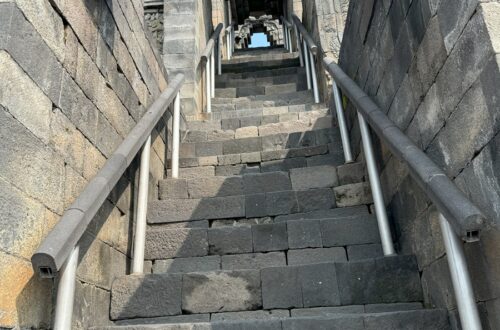
An Educational Experience at Borobudur
Recently, I had the pleasure of representing Singapore at the seminar on ASEAN Spice: The Connecting Culture of Southeast Asians in Yogyakarta. As part of the event, delegates from ASEAN countries toured Borobudur.
Including a visit to Borobudur in the seminar was symbolic. The temple, a UNESCO World Heritage site, is not only a marvel of ancient architecture and Buddhist art but also holds cultural and historical stories carved into its stone reliefs. These carvings show ancient practices related to spices and natural healing.
The detailed bas-reliefs of Borobudur depict scenes from daily life in 9th-century Java, including the use of various spices and medicinal plants. These reliefs show the advanced knowledge of herbal medicine and the importance of spices in the social and economic life of that time. Delegates saw carvings that illustrate the use of turmeric, ginger, and other spices, which were important both in cooking and traditional medicine.

This visit highlighted the continuous importance of spice culture in Southeast Asia. It showed how these ancient practices have lasted through time, continuing to influence modern health and cooking traditions in the region. By linking this historical perspective with the present, the tour helped delegates understand how spices have been a unifying element in Southeast Asian culture, creating a shared heritage that still connects the diverse ASEAN nations.

The tour of Borobudur was not just a cultural trip but also an educational experience. It emphasized the lasting legacy of spices and natural healing inscribed in stone, reflecting their key role in Southeast Asia’s cultural and historical fabric.
#chefdevagisanmugam #devagisanmugam #borobudur #ASEAN #ASEANecotourism #sustainabletourism #ancienttechnology #sacredgeometry #spirituality #borobudurtemple #wonderfulindonesia #spiceroute #jalurrempah #herbsandspices





